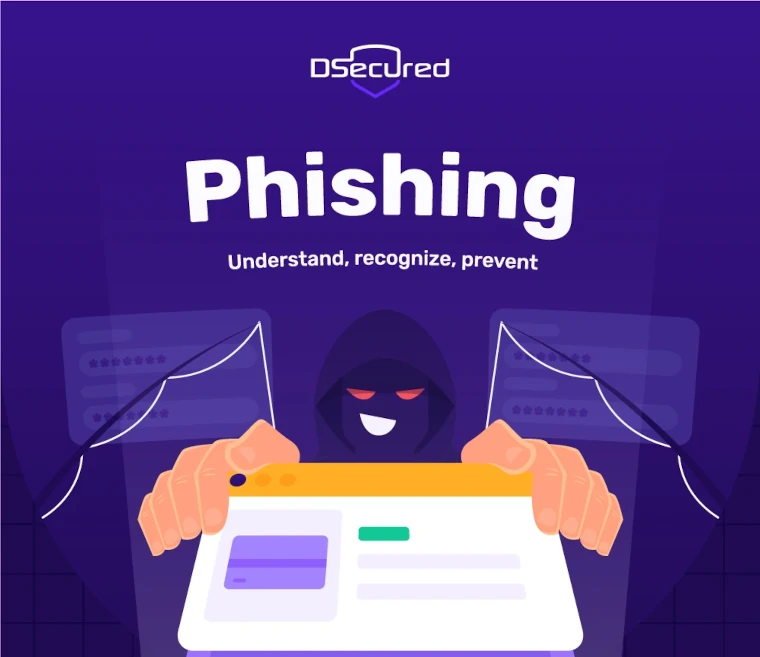Phishing exercises - creating awareness
Reality shows that attackers extremely often use phishing, usually spear phishing, to break into companies or gain a foothold in this way. The employees are the weakest link in the chain. You can put your employees to the test with our phishing exercises.

What is Phishing?
Phishing is a social engineering technique in which attackers pose as trustworthy senders to steal access credentials, payment connections, or other sensitive information. A successful phishing attack is often at the beginning of ransomware campaigns and account takeovers.
Organizations increasingly face spear phishing and whaling campaigns. Attackers specifically research employees or executives, use social media and leaks, and craft deceptively authentic messages - now often supported by generative AI.
Modern protection concepts therefore rely on multi-layered measures: training, technical filters, multi-stage approvals, and regular simulations. This is the only way to recognize how well teams respond when links, QR codes, or phone calls urge "action."
Find more background information in the glossary: What is Phishing?
What Types of Phishing Exercises Exist?
Spear Phishing
Attacks targeting individual employees or teams. Attackers research names, roles, and networks to develop tailored messages that appear like genuine internal communications.
The goal is to execute a specific action - such as opening a manipulated link or disclosing access credentials.
Whaling
CEOs, CFOs, and other decision-makers are in focus. Messages appear as urgent business matters and exploit trust and authority to obtain wire transfers or sensitive information.
Clone Phishing
Attackers copy genuine company emails, replace links or attachments with malicious code, and resend them. Since the email appears familiar and trustworthy, many recipients click without hesitation.
Vishing
Telephone-based social engineering attacks: fraudsters pose as banks, support, or authorities, create pressure, and extract access credentials or authorization codes.
Smishing
Phishing via SMS or messenger. Short texts with supposedly urgent links to delivery services or account blocks aim to get users to enter data. Skepticism and callback via known channels help here.
AI-Powered Campaigns
Generative AI formulates masses of authentic messages, translates idioms in seconds, and personalizes approaches. We simulate such scenarios to prepare your team for new levels of automation.
Phishing in Red Teaming
In red teaming exercises, we simulate realistic attacks to challenge your organization's detection chains. The goal is to test response capabilities and technical security measures - not just awareness.
To do this, we adapt tactics to your environment: from social engineering scripts to subdomain takeovers to MFA bypassing. This identifies vulnerabilities in processes, technology, and people - which can then be addressed with priority.
Persistent Issues & Trends
Social engineering and phishing remain number one for initial access - often a single click is enough to plant backdoors.
LLMs write perfect texts in any language. We test whether employees and processes can recognize this new quality.
Even with successful clicks, attackers must not be able to proceed. Therefore, network hardening and monitoring are always part of the result report.
A practical highlight: Through a subdomain takeover on vpn.company.com, we were able to capture login credentials from dozens of users - an example of how important continuous monitoring of the external attack surface is.
Infographic: Understanding Social Engineering
Our infographic summarizes typical phishing processes, defense measures, and awareness tips - ideal for internal communication or awareness campaigns.

Request phishing exercise
Have questions about our services? We'd be happy to advise you and create a customized offer.
Quick Response
We'll get back to you within 24 hours
Privacy
Your data will be treated confidentially
Personal Consultation
Direct contact with our experts

Related to Phishing
Continuous Monitoring
Our eASM platform "Argos" is capable of monitoring your entire external infrastructure non-stop - so you and we can quickly identify potential problems. The platform searches for and reports anomalies to us.
Learn morePenetration Testing
Penetration tests are used to search for security vulnerabilities in particularly critical applications in a very focused manner.
Learn moreDarknet Intelligence
Too often we are part of highly complex technical penetration tests, but these do not prevent employee data from being leaked on the Internet for the portal being tested. As a customer, you should know about this!
Learn moreWhat clients say about us
Experiences from real projects
„I've been really impressed with DSecured. The results they delivered exceeded our expectations. They found a wide range of IT problems and severe vulnerabilities and always communicated clearly. Working with them has been straightforward and reassuring.“
„The security of our customers’ data is our top priority. Thanks to DSecured, we were able to improve the resilience of our systems and realize how important the topic of "Shadow IT" is. The commitment of the team and their skills made the crucial difference for us.“
„DSecured was able to discover a surprising number of previously undetected security gaps in our infrastructure. The Argos platform as well as classic penetration testing were used for this. We really appreciated the honest advice on the subject of IT security and automation and would like to thank Mr. Strobel for this.“
„Mr. Strobel and his team regularly carry out penetration tests against our automation platform - and always find what they are looking for. The results are presented clearly and reproducibly. Communication has so far taken place via short channels, for example via Slack. We can definitely recommend DSecured.“

